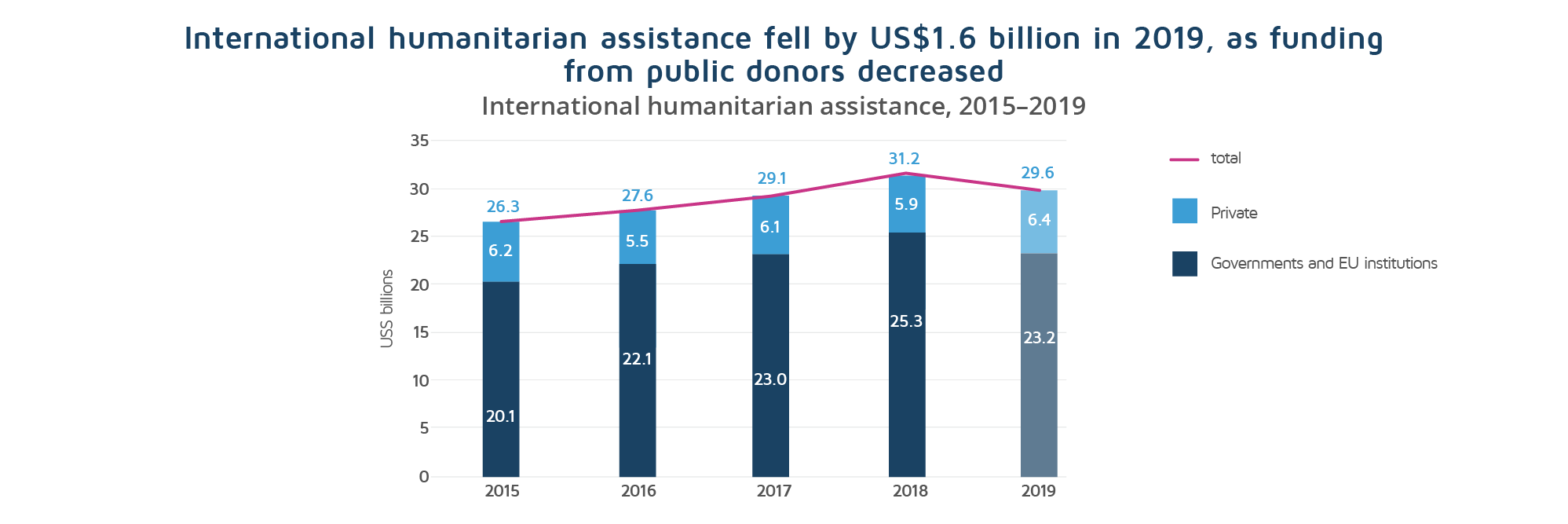2019 was a challenging year in terms of humanitarian assistance. The number of displaced people around the world reached record heights, additional new conflicts emerged and natural disasters struck countries already experiencing prolonged crises. Overall, humanitarian crises have become increasingly complex and enduring. Here, DevelopmentAid presents the highlights of the Development Initiative’s annual Global Humanitarian Assistance (GHA) report which every year comprehensively assesses the international financing of humanitarian situations.
In 2019, for the first time since 2012, international humanitarian assistance decreased, down 5% from the previous year to US$ 29.6 billion. Almost half of the 20 largest donors reduced their contributions by more than 10%. The steepest funding reduction came from the United Arab Emirates (UAE) which fell by 71% (US$1.5 billion) in 2019, following a previous rise of US$1.8 billion in 2018.
This reduction of financial support for international humanitarian assistance was driven by a fall in funding from governments which has interrupted the previous trend of sustained growth in which funding increased by US$5.2 billion between 2015 and 2018, representing an increase of 26%.
Source: Global Humanitarian Assistance report, 2020
Funding requirements for UN-coordinated appeals increased by 2 from 2018, reaching a total of 36 in 2019, the highest ever number. The aggregate increase in appeal requirements in 2019 was caused by significant growth requirements in Yemen and the development of new appeals. For the total amount of appeals, the United Nations requested US$30.4 billion of which 64% was achieved and this was a record in committed funding to UN appeals.

Source: DevelopmentAid
Nevertheless, over a third of the funding requirements were not met. Together, the two appeals for Yemen and Syria accounted for almost a third (32%) of all appeal requirements. New appeals also contributed significantly to the increase in total funding, requirements with the UN launching five new country plans (HRPs), and a new regional plan (RRP) in 2019, some of these in Venezuela, Mozambique, and Zimbabwe.
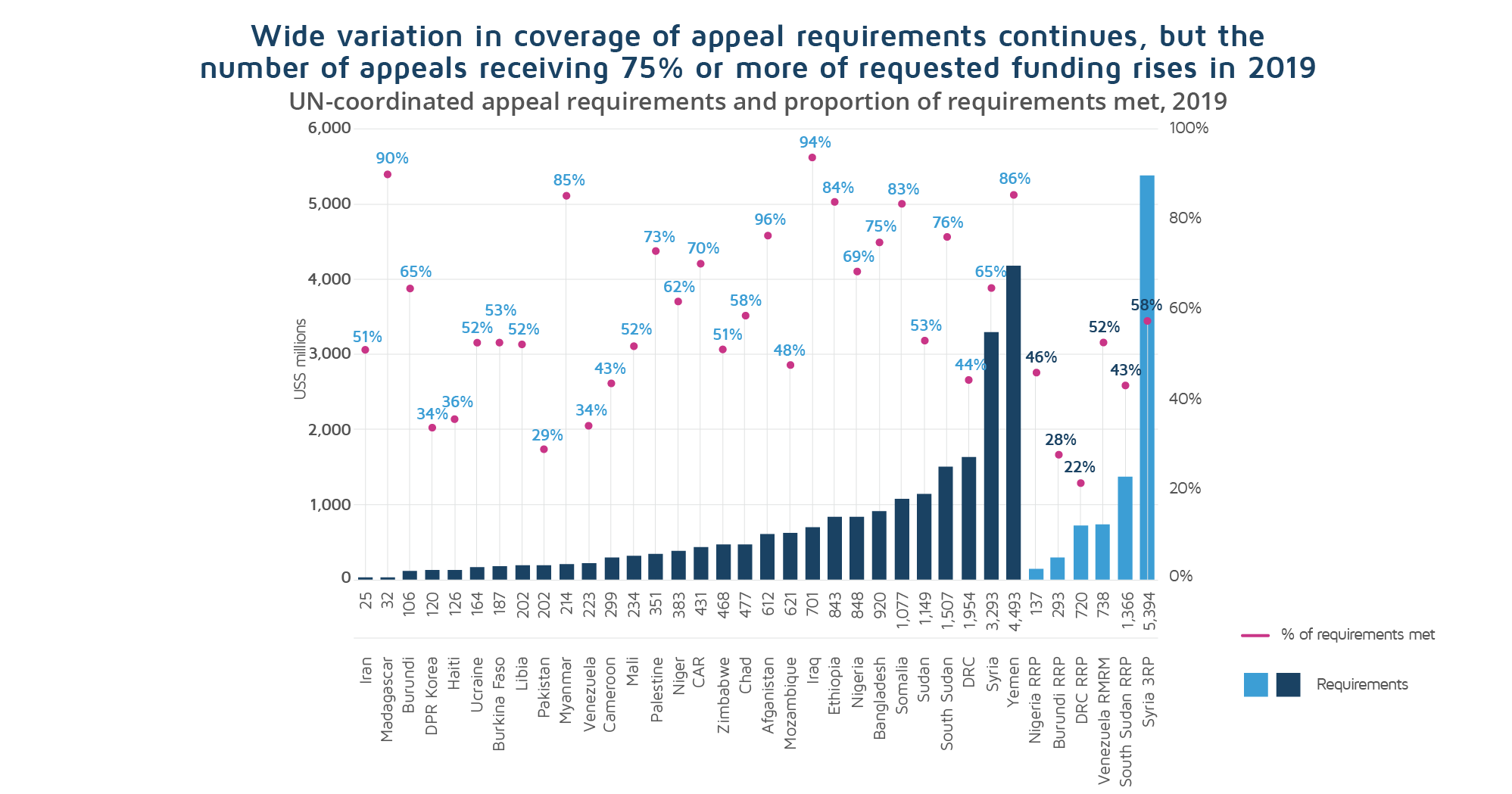
Source: Global Humanitarian Assistance report, 2020
Severe and prolonged crises persisted in 2019 with conflict and forced displacement continuing to impact the largest populations of people in need. Many countries experienced more than one form of crisis (conflict, natural disaster, and displacement) resulting in an estimated 215.6 million people being assessed as in need of humanitarian assistance. In five countries affected by ongoing conflict and crisis – Yemen, Syria, South Sudan, Central African Republic and Palestine – the equivalent of more than half of their populations require humanitarian assistance. The socioeconomic and political crisis, coupled with poor harvests and food shortages, has seen a rising number of people in need in Venezuela.
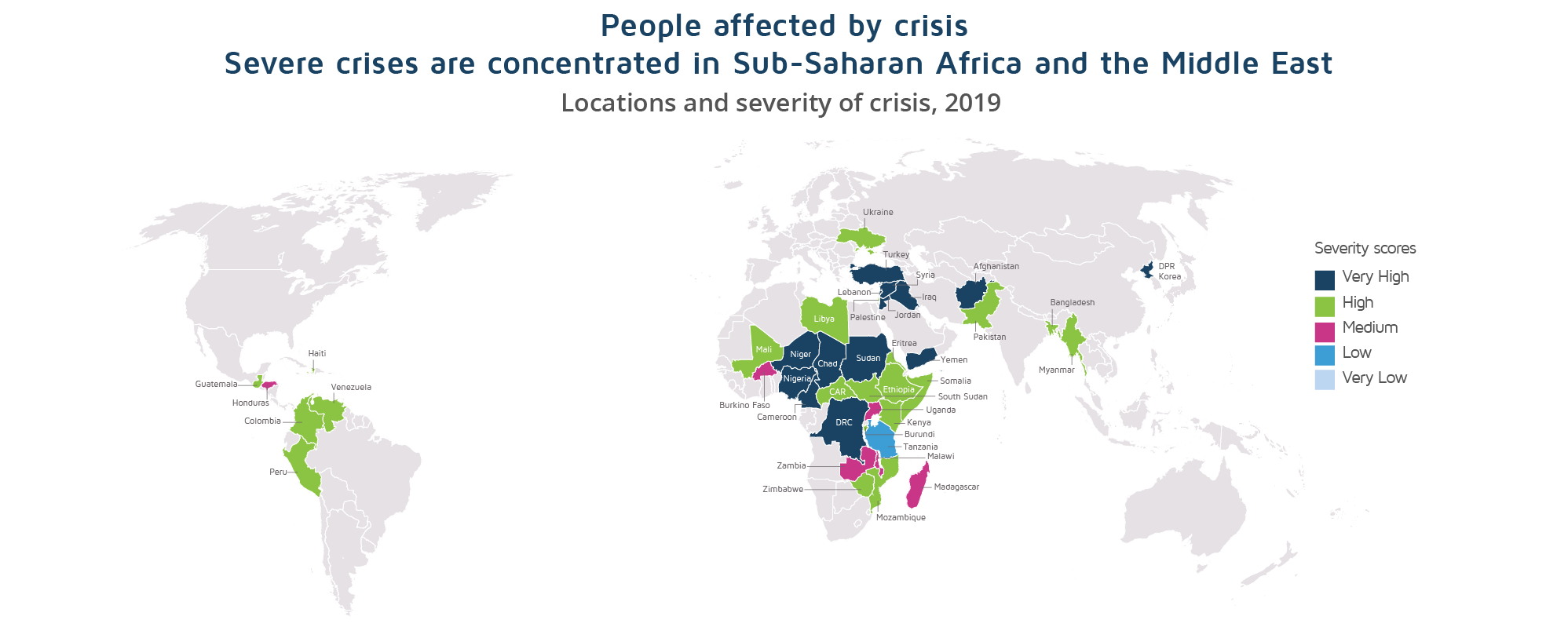
Source: Global Humanitarian Assistance report, 2020
In 2019, the number of displaced people around the world increased to 79.5 million, up 8% from 2018, with an increase being experienced for the eighth consecutive year, the number having almost doubled since 2009. Conflict and crisis continue to drive displacement with the majority of displaced people (57%) being internally displaced while one third were refugees and 5% were asylum seekers. Yemen saw the biggest increase in the number of displaced people in 2019. The number of displaced people in South America rose significantly in 2019 with Colombia being the country hosting the largest displaced population in the world: 5.6 million internally displaced people and 1.8 million displaced Venezuelans. Venezuelans displaced abroad, who now number more than 3 million, are recognized as a distinct group of people of concern. However, the region hosting the largest number of displaced people is the South Saharan region, with around 33% of all displaced people in the world congregating there.
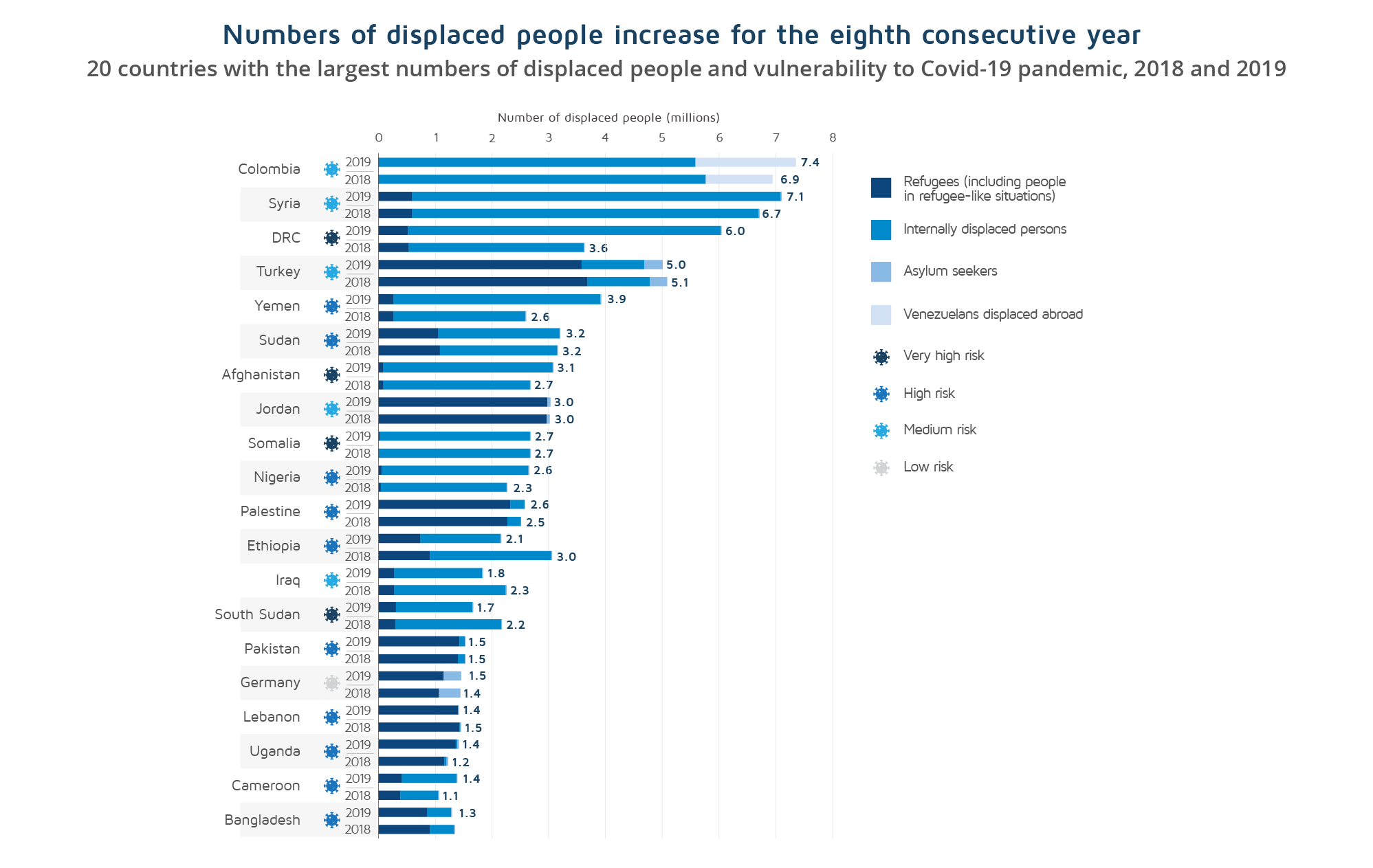
Source: Global Humanitarian Assistance report, 2020
The three largest donors of international humanitarian assistance in 2019 remained the US, Germany, and the UK, with contributions from the UK rising sharply by 24% to US$3.1 billion. Contributions from these countries accounted for 58% of all international humanitarian assistance from public donors. However, 13 governments reduced the volume of international humanitarian assistance they provided in 2019 with the steepest regional reduction coming from the Middle East and North of Sahara. However, despite this reduction in 2019, the volume of assistance provided by countries within these regions has increased by 383% since 2010, a rate of growth three times higher than that of the European governments and EU institutions. The most noticeable country reductions came from UAE (71%), Australia (44%), Kuwait (25%) and Italy (22%). Overall, aggregate funding decreased in all the regions of the world apart from Europe which increased slightly by 1.9% in 2019.
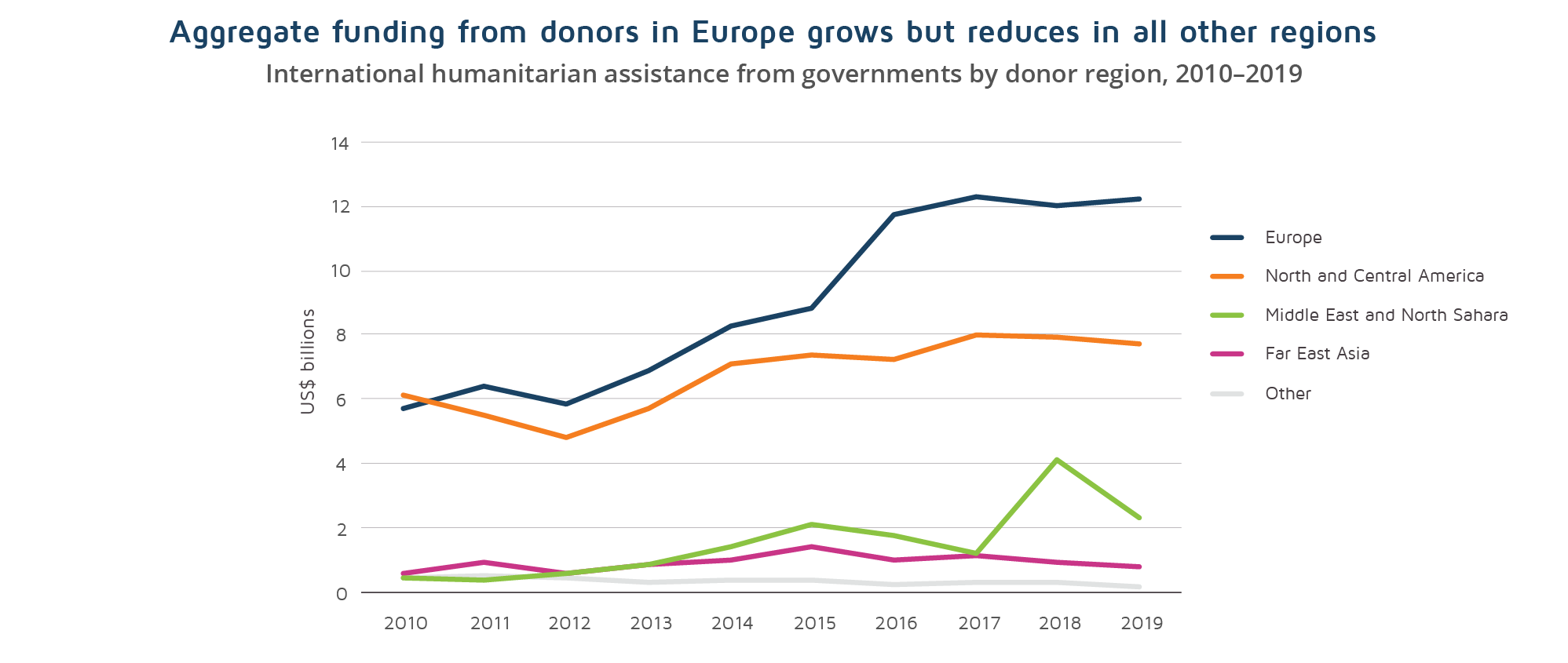
Source: Global Humanitarian Assistance report, 2020
For the first time since the escalation of civil war in the country in 2012, the crisis in Syria did not receive the largest volume of assistance. Instead, the largest amount of humanitarian assistance was directed to the crisis in Yemen, also due to an increase in funding from the Middle East region in 2018. Overall, the decade-long trend of a small number of crises/countries receiving a large proportion of total humanitarian assistance has remained unchanged. The latest available comprehensive data from the OECD DAC as to where assistance has been targeted in response to need is for 2018.
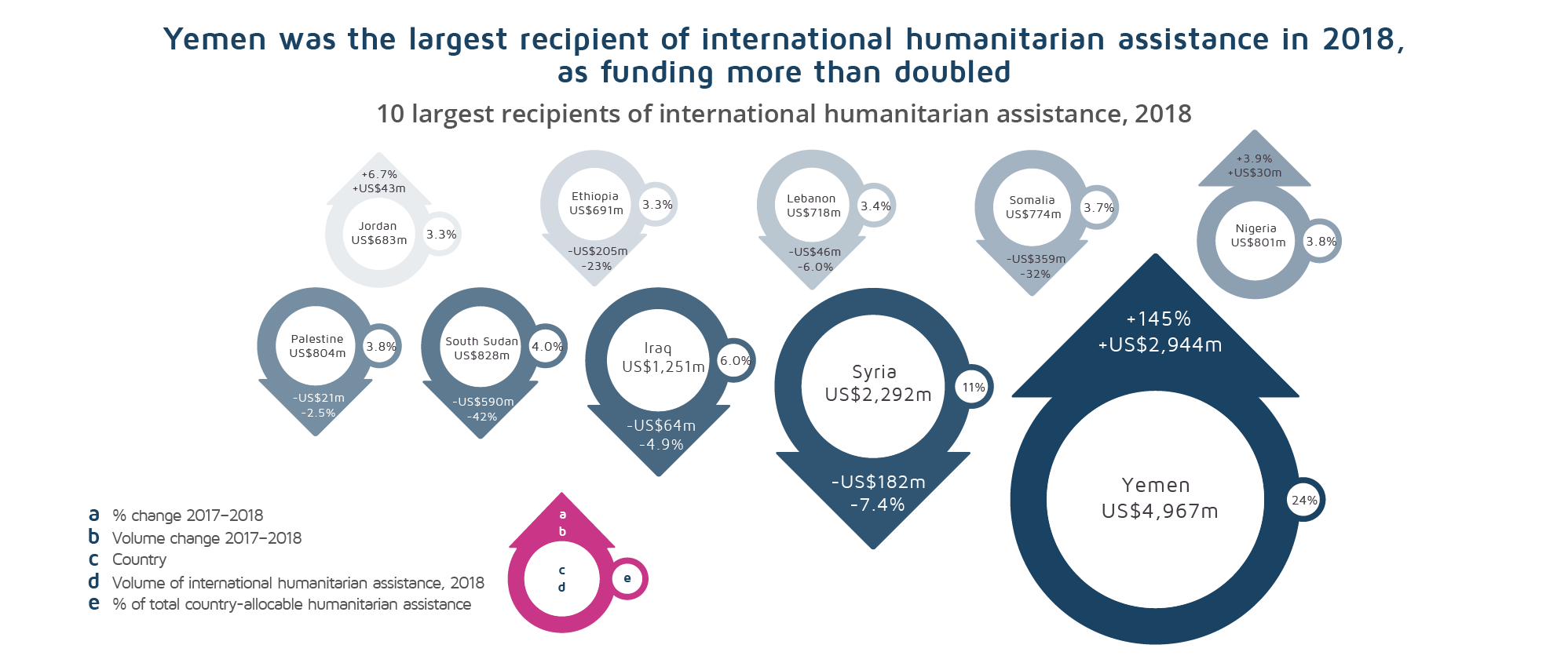
Source: Global Humanitarian Assistance report, 2020
DevelopmentAid not only provides data regarding the field of international humanitarian assistance (HA), it is also a platform providing information regarding open tenders and funding for HA. Access the DevelopmentAid website for information on the more than 300 open tenders for the humanitarian assistance sector. You can also browse through more than 200 open job positions for humanitarian workers.

